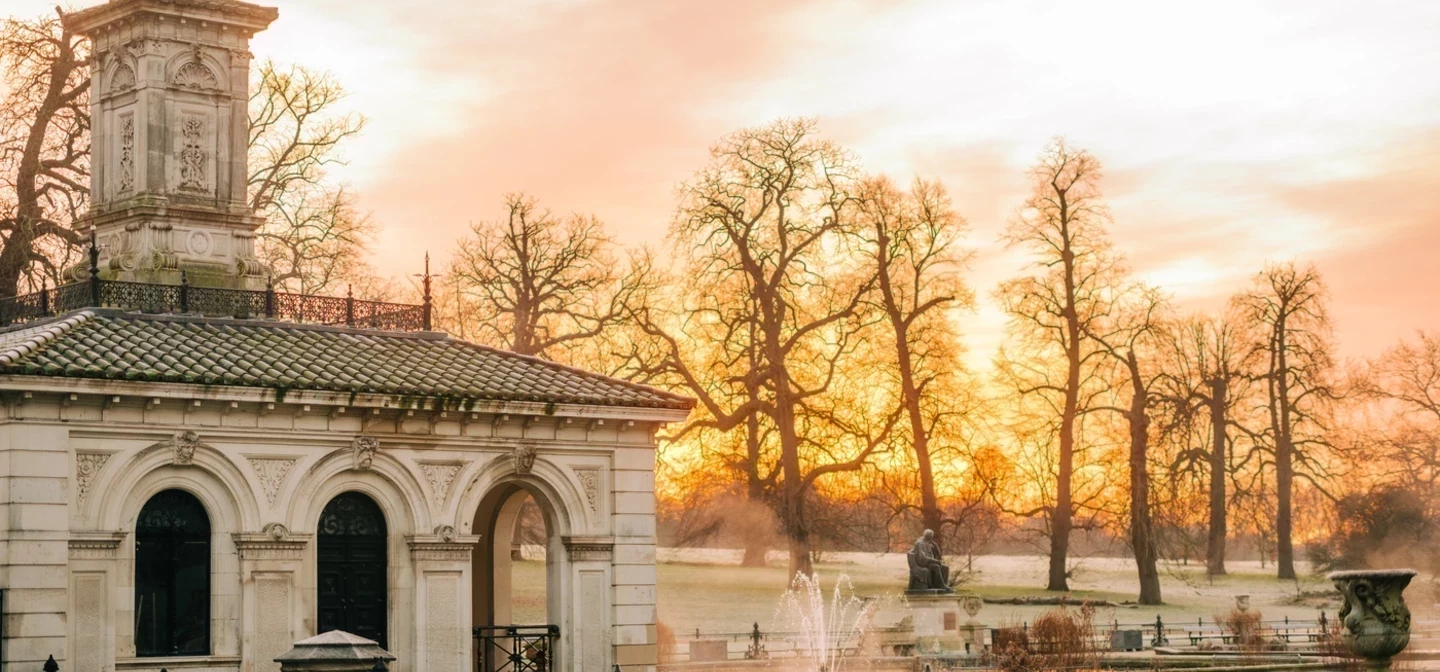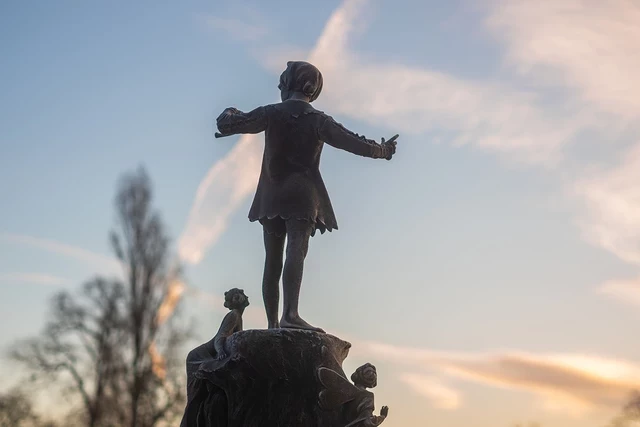
Welcome to Kensington Gardens
Once upon a time, this park was the private playground of the nobility.
Key information
Dreamed up by Queen Caroline in the 18th century, these celebrated gardens were originally part of Kensington Palace. Today, they are open to everyone – no longer exclusive, but still extraordinary.
You are invited to explore the historic tree avenues, majestic vistas and blossoming flower walks where generations of writers and artists have set their imaginations free. Follow in their footsteps, and you might just meet the park’s most famous fictional resident – Peter Pan, the boy who wouldn’t grow up. You can find him down by the Long Water, keeping company with the swans and ducks.
As you wander through the park, prepare to be enchanted by world-renowned landmarks like the imposing Albert Memorial, a testament to grandeur and remembrance. Nearby, the iconic Italian Gardens beckon with their symmetrical beauty and cascading fountains, a serene retreat within the bustling cityscape. For our youngest visitors, The Diana Princess of Wales Memorial Playground awaits, where imaginations soar aboard a sturdy wooden pirate ship, charting imaginary seas of adventure.
Perhaps you’re looking for a bit of peace and quiet? The meandering flower walks on each side of the park offer a tranquil place to sit and admire fine horticulture. There are wilder expanses, too, where the park’s biodiversity flourishes in meadows alongside veteran trees - living relics of the park’s historic past. In these spaces, it’s hard to believe you’re in the middle of a city.
Discover more about Kensington Gardens
-
Shrine of Youth: The Peter Pan Statue, Kensington Gardens
The Royal Parks are bursting with literary history. Perhaps the most famous fictional resident of the parks is Peter Pan – the boy who wouldn’t grow up.
-
The water features of Hyde Park and Kensington Gardens
The water features of Hyde Park and Kensington Gardens
-
The Royal Parks in Literature
From Samuel Pepys to J.M. Barrie, discover the classic authors whose connections to London’s Royal Parks inspired and featured in their stories
